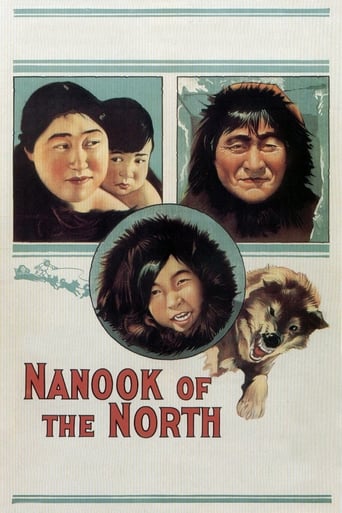Nanook Of The North (1922)

 “Nanook of the North” is a landmark silent documentary film directed by American filmmaker Robert J. Flaherty and released in 1922.
“Nanook of the North” is a landmark silent documentary film directed by American filmmaker Robert J. Flaherty and released in 1922.
It is considered one of the earliest and most influential examples of the documentary genre and is celebrated for its exploration of the Inuit people’s way of life in the harsh Arctic environment. The film captures the daily struggles, customs, and traditions of the Inuit, providing a window into a world rarely seen by the broader audience. “Nanook of the North” remains a pivotal work in the history of cinema, pioneering documentary filmmaking and setting a high standard for the genre.
The film’s title character, Nanook, is an Inuit man from the Arctic region. He, along with his family, becomes the focal point of the documentary as the film portrays their life in an unforgiving environment. The Inuit people’s resilience and resourcefulness in the face of extreme cold and challenging conditions serve as a central theme of the film.
Robert J. Flaherty’s approach to making “Nanook of the North” was groundbreaking for its time. He employed a mix of reenactments and real-life situations to create a narrative structure that would engage audiences while remaining faithful to the Inuit way of life. This approach, known as “docufiction,” was a pioneering method that aimed to balance storytelling with documentary realism.
The film showcases various aspects of Inuit culture, including hunting, fishing, and building traditional igloos. The breathtaking cinematography, shot under extreme conditions in the Arctic, captures the stunning natural beauty of the region, from vast ice floes to expansive landscapes, providing viewers with a genuine sense of the Inuit people’s surroundings.
One of the most memorable scenes in the film involves Nanook’s attempt to catch a seal by hunting it through a small hole in the ice. This sequence captures the dangers and challenges faced by the Inuit in their quest for survival, and it has become an iconic moment in the history of documentary filmmaking.
The authenticity and intimacy of “Nanook of the North” make it a unique and enduring work. The film allows viewers to witness the Inuit way of life, from the building of an igloo to the clothing and tools they use for survival. It also delves into the interpersonal relationships within the family and their interactions with the environment and animals.
While “Nanook of the North” is celebrated for its groundbreaking achievements, it has also faced criticism and controversy over the years. Some have questioned the degree of staging and reenactment that Flaherty employed in making the film, suggesting that it might not be a completely accurate representation of Inuit life. Nonetheless, the film’s impact on the documentary genre and its cultural significance remain undeniably significant.
In conclusion, “Nanook of the North” (1922) stands as a pioneering work in the documentary genre, capturing the daily life and struggles of the Inuit people in the Arctic. Robert J. Flaherty’s groundbreaking approach to docufiction created a unique and enduring portrayal of a world rarely seen by the broader audience. The film’s lasting impact on documentary filmmaking, as well as its exploration of culture, survival, and the human connection to nature, solidify its place in the history of cinema.
Release Date: June 11th, 1922
Main Cast Members
Allakariallak (Nanook)
Alice Nevalinga (Nanook’s Wife – the Smiling One)
Cunayou (Cunayou – Nanook’s Daughter)
Allegoo (Allegoo – Nanook’s Son)
Allee (Allee – Nanook’s Son)
Loading live eBay listings...




